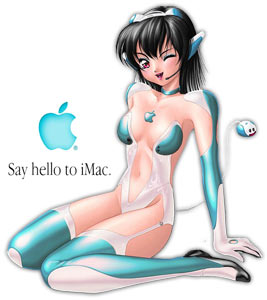While Japan represents the second largest market for Apple’s Macintosh computers, making headway here hasn’t always been easy, which is reflected in the lower market share of about 3.5% in Japan compared with the current 7.5% in the U.S. Apple started selling Macs in the Japanese market way back in 1986, and I have un-fond memories of hacking my computer to work with kanji fonts while we waited a year for the Japanese version of System 7 “Kanjitalk” to be released. (OS X’s support for every language on one install disc is a real win for multi-language users.) Despite Apple’s lower market share numbers, it’s interesting to see the impression Apple’s designs make on other products. When the original iMac was introduced in 1998, Japan experienced a boom in iMac-colored products made of see-through plastic which the Japanese referred to as “skeleton,” and for years there wasn’t a product you couldn’t find in Bondi Blue or Tangerine Orange. After a slow start, the iPhone has really begun to catch on here, grabbing 46% of the smartphone market and causing the popular boy-band SMAP to cancel their contract selling NTT Docomo’s phones and switch to Softbank so they could sell the iPhone. Now, just about every product you can think of is copying the iPhone, from the new Canon IXUS camera with iPhone style finger gestures to a host of new candybar phones with iPhone app-style gimmicks built in, of course missing the whole point, since there’s no flexible OS, no marketplace for apps, music stores that are so closed they make iTunes look Linux and so on.

Apple designs have a tendency to influence Japanese products.














